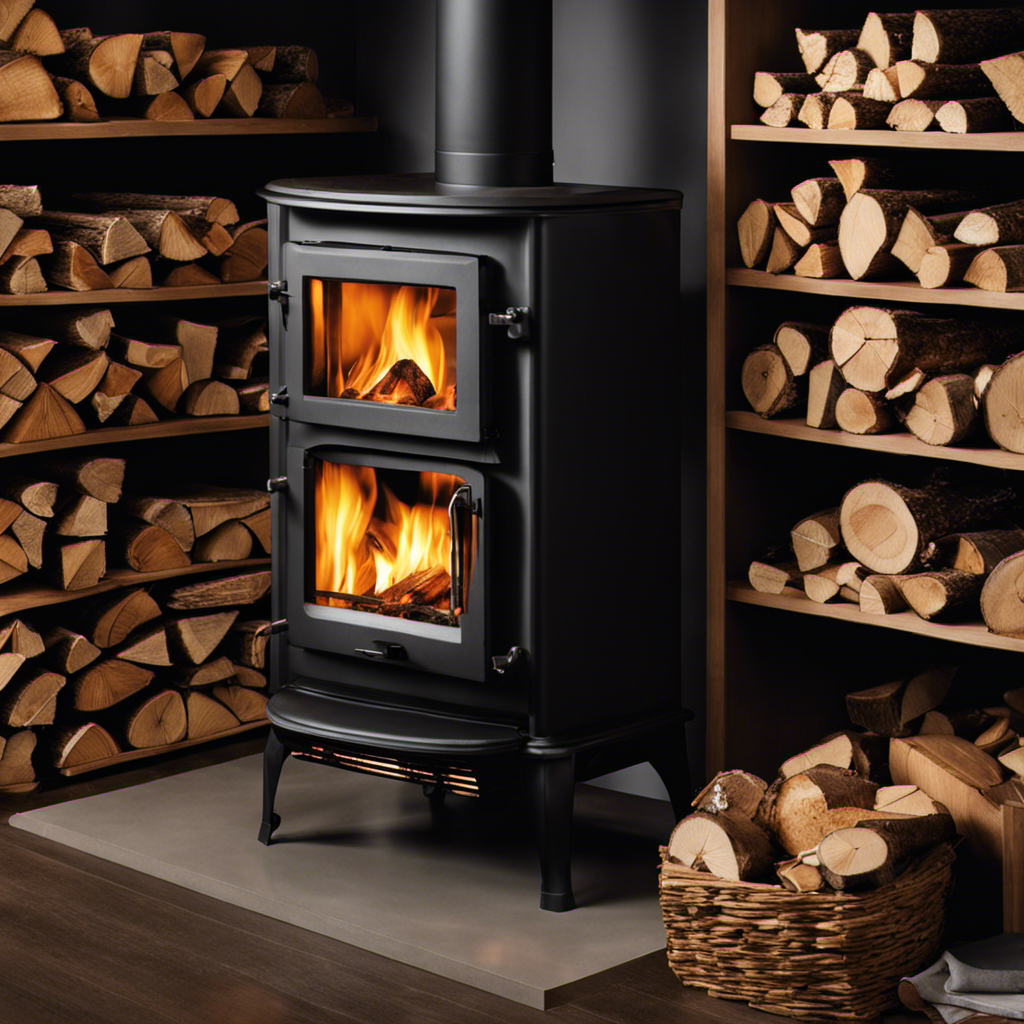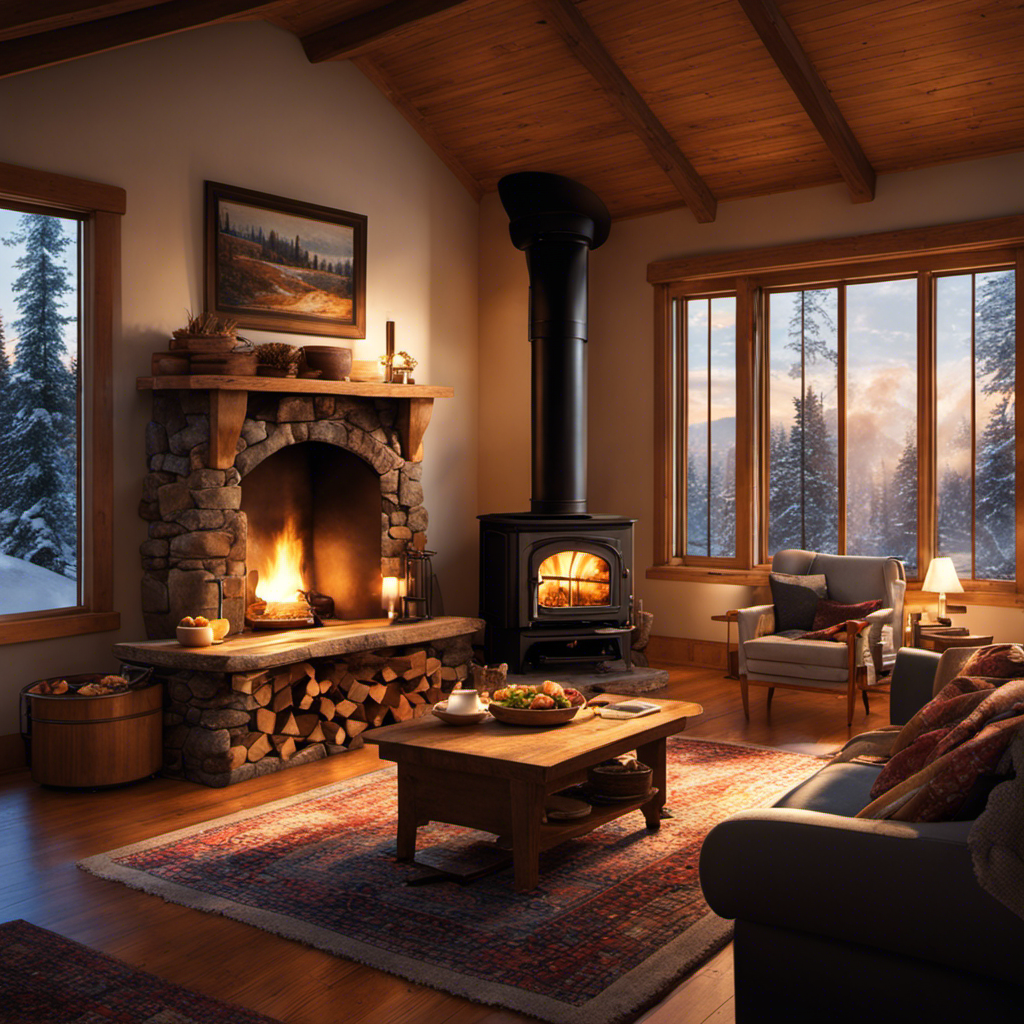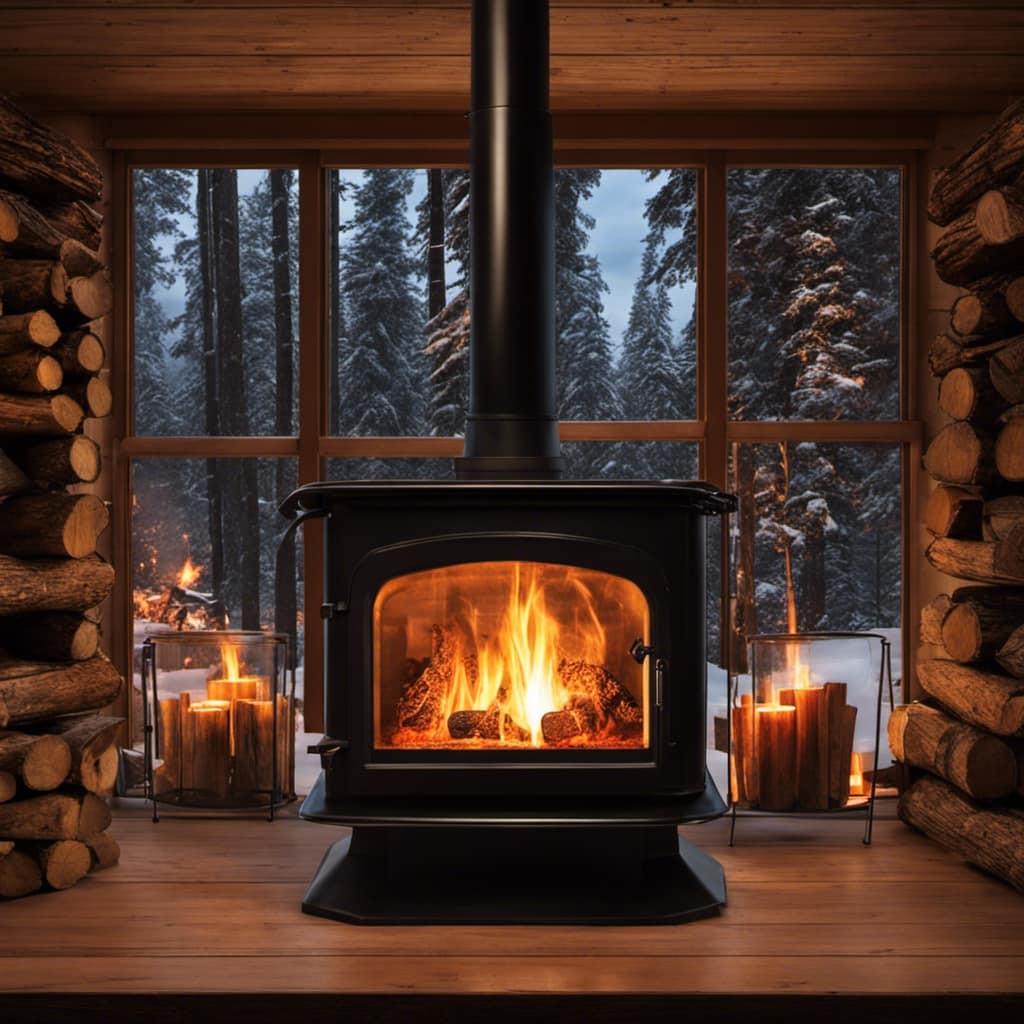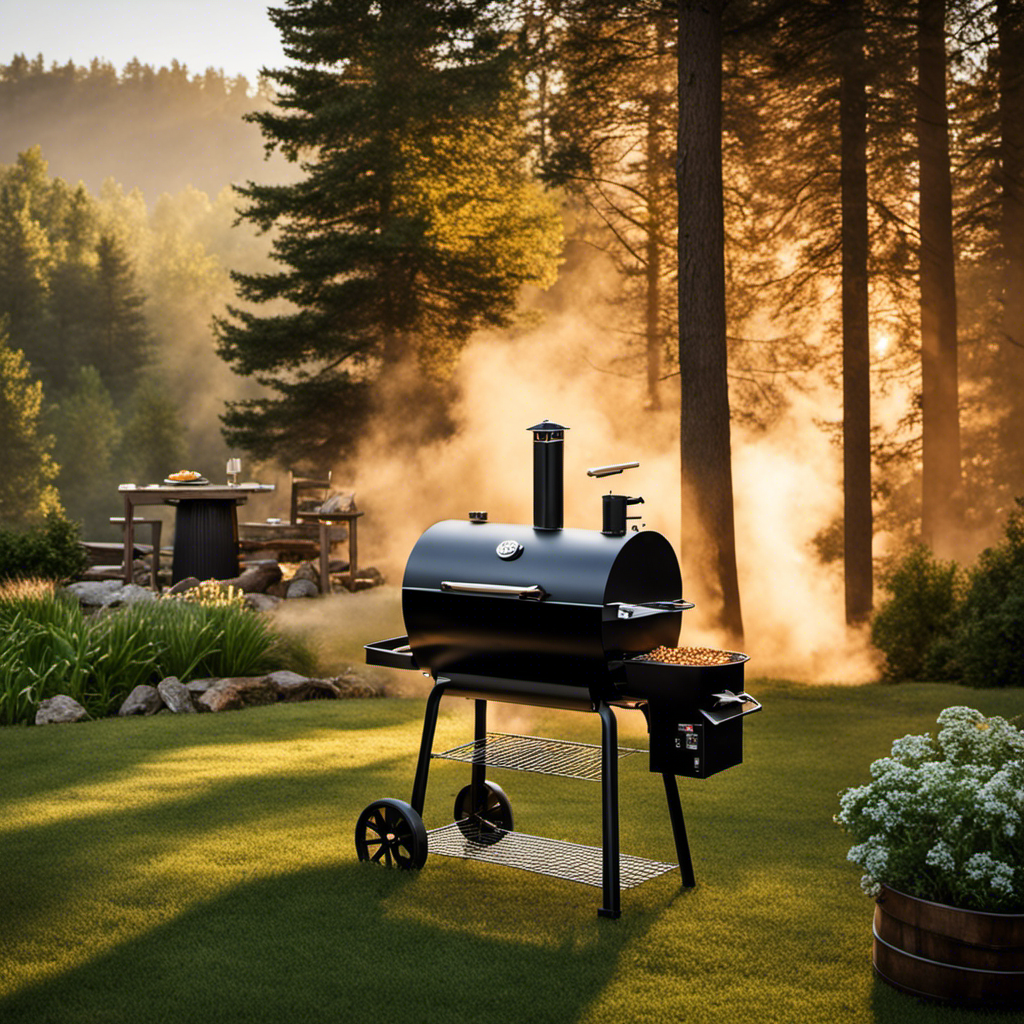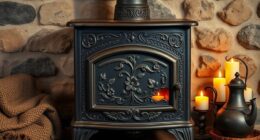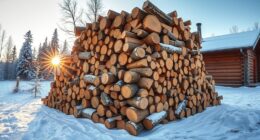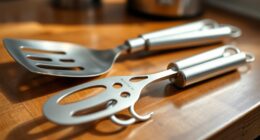As an experienced fan of wood stoves, I have honed the skill of skillfully managing the dynamic dance of the flames. It’s not just about generating heat; it’s about refining a dance of precision and effectiveness.
Through careful adjustments, choosing the right wood, and clever insulation, you can transform your wood stove into a slow-burning masterpiece.
Join me on this journey as I share my knowledge and techniques to help you make the most of your wood stove, enhancing both warmth and ambiance.
Key Takeaways
- Adjusting airflow settings reduces oxygen supply to the fire, resulting in a slower and more controlled burn.
- Choosing hardwoods like oak, hickory, or maple provides a longer-lasting heat source for slower burning.
- Using firebricks or refractory materials increases heat retention and ensures efficient combustion.
- Insulating the surrounding area with heat shields and insulation materials prevents heat loss and directs more heat into the room.
Adjusting Airflow Settings
I can make my wood stove burn slower by adjusting the airflow settings, so that less oxygen is supplied to the fire. This technique not only helps in conserving fuel but also has a positive environmental impact.
By reducing the amount of oxygen, the fire burns at a lower intensity, resulting in a slower and more controlled burn. This increased fuel efficiency means that I can get more heat from the same amount of wood, reducing the need for constant refueling.
Not only does this save me money, but it also reduces the amount of wood I need to burn, which in turn reduces the environmental impact of my wood stove. By adjusting the airflow, I can enjoy a longer-lasting fire while being mindful of the environment.
Choosing the Right Wood Type
To achieve a slower burn in my wood stove, I can choose the right wood type and adjust the airflow settings.
When it comes to the wood type, using hardwoods like oak, hickory, or maple is ideal. These woods are denser and burn slower, providing a longer-lasting heat source. Softwoods like pine or cedar, on the other hand, burn faster and may not provide the desired slower burn.
Additionally, it’s important to ensure proper wood storage and seasoning. Wood should be stored in a dry and well-ventilated area for at least six months to a year to allow it to properly season. Seasoning firewood reduces its moisture content, making it burn more efficiently and produce less smoke.
Using Firebricks or Refractory Materials
Using firebricks or refractory materials can significantly increase the efficiency of my wood stove by retaining and radiating heat more effectively. Here are four benefits of firebrick installation and the use of refractory materials in wood stoves:
-
Improved Heat Retention: Firebricks have excellent thermal properties, allowing them to absorb and store heat for longer periods. This means that even after the fire has died down, the bricks will continue to radiate heat, keeping the room warm.
-
Enhanced Combustion: Firebricks create a controlled environment within the stove, ensuring efficient combustion by maintaining high temperatures. This results in a more complete burn and reduces the amount of unburned fuel and harmful emissions.
-
Longer Lifespan: The high heat resistance of firebricks and refractory materials allows them to withstand extreme temperatures without cracking or deteriorating. This extends the lifespan of the wood stove, reducing the need for frequent repairs or replacements.
-
Increased Safety: Firebricks act as a barrier between the intense heat of the fire and the surrounding structure, minimizing the risk of accidental fires. They also help to prevent damage to the stove’s metal components by providing insulation.
Insulating the Surrounding Area
There are several ways to effectively insulate the surrounding area of the wood stove for better heat retention. One method is to install a heat shield on the wall behind the stove. This shield can be made of non-combustible materials such as sheet metal or ceramic tiles.
Another option is to use insulation materials, like fiberglass or mineral wool, to fill any gaps or spaces around the stove. This helps prevent heat from escaping and ensures that more of it’s directed into the room.
Additionally, using a draft control mechanism, such as a damper or air intake, can help regulate the airflow and prevent excessive heat loss through the chimney. By insulating the surrounding area and controlling the draft, you can significantly improve heat retention and make your wood stove burn more efficiently.
Now, let’s move on to regular maintenance and cleaning.
Regular Maintenance and Cleaning
I always ensure the wood stove is properly maintained and cleaned, so I can enjoy its efficient and safe operation. Regular maintenance and cleaning are essential for a wood stove to function optimally. Here are four important steps to consider:
-
Flue maintenance: The flue is responsible for removing smoke and gases from the stove. Over time, creosote buildup can occur, which can lead to chimney fires. Regularly inspect and clean the flue to prevent any blockages or obstructions.
-
Chimney sweeping: Hiring a professional chimney sweep is crucial to remove soot, debris, and creosote from the chimney. This not only improves the stove’s efficiency but also reduces the risk of chimney fires.
-
Ash removal: Regularly clean out the ash and dispose of it properly. Excessive ash buildup can restrict airflow and hinder combustion, resulting in a slower burn.
-
Check gaskets and seals: Inspect and replace any worn-out gaskets or seals to ensure a tight seal. This prevents air leaks and helps maintain a steady burn.
Frequently Asked Questions
Can I Use Any Type of Wood in a Wood Stove?
Yes, you can use different types of wood in a wood stove. However, some woods burn more efficiently than others. It’s important to choose hardwoods like oak or maple for a slower and longer-lasting burn.
How Can I Make My Wood Stove Burn Hotter?
To make my wood stove burn hotter, I focus on wood stove maintenance and improving efficiency. I clean the stove regularly, ensure proper airflow, use dry and seasoned wood, and adjust the damper and air vents accordingly.
Can I Use Firebricks or Refractory Materials in a Wood Stove That Is Not Designed for Them?
Using firebrick alternatives or refractory materials in a wood stove not designed for them can be risky. It may compromise the stove’s safety and efficiency. It’s best to consult a professional for advice on how to make your wood stove burn slower.
Is It Necessary to Insulate the Area Around My Wood Stove?
Using insulation around a wood stove can have pros and cons. It can help to increase efficiency and reduce heat loss, but it may also create a fire hazard if not installed properly. Choosing the right type of insulation is crucial for safety and optimal performance.
How Often Should I Clean and Maintain My Wood Stove?
To maximize heat output and troubleshoot common wood stove problems, it’s important to clean and maintain the stove regularly. By doing so, you can ensure efficient burning and a longer lifespan for your wood stove.
Conclusion
In conclusion, by adjusting airflow settings, choosing the right wood type, using firebricks or refractory materials, insulating the surrounding area, and regularly maintaining and cleaning your wood stove, you can effectively slow down the burning process.
Just like the gentle ebb and flow of a river, these techniques create a harmonious rhythm, allowing for a longer and more efficient burn.
So, embrace the power of symbolism and take control of your wood stove’s burn rate for a cozy and sustainable heating experience.
Growing up surrounded by the vast beauty of nature, Sierra was always drawn to the call of the wild. While others sought the comfort of the familiar, she ventured out, embracing the unpredictable and finding stories in the heartbeat of nature.
At the epicenter of every remarkable venture lies a dynamic team—a fusion of diverse talents, visions, and passions. The essence of Best Small Wood Stoves is crafted and refined by such a trio: Sierra, Logan, and Terra. Their collective expertise has transformed the platform into a leading authority on small wood stoves, radiating warmth and knowledge in equal measure.

